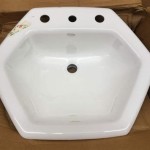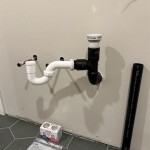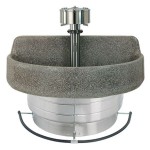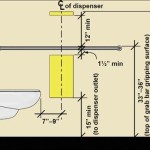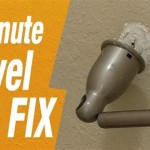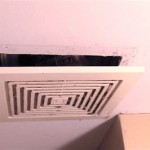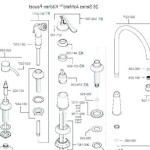How To Get Rid Of Humidity In Your Bathroom
Excess humidity in a bathroom environment can lead to a host of problems, ranging from unsightly mold and mildew growth to structural damage. High moisture levels foster the proliferation of these organisms, creating an unhealthy atmosphere and potentially triggering allergic reactions or respiratory issues. Furthermore, prolonged exposure to humidity can weaken building materials, causing paint to peel, wallpaper to loosen, and even wood to rot. Addressing bathroom humidity proactively is therefore crucial for maintaining a healthy and structurally sound home.
The primary sources of bathroom humidity are activities that involve water, such as showering, bathing, and running the sink. Hot water, in particular, releases significant amounts of steam into the air, rapidly increasing the humidity level. Poor ventilation exacerbates the problem, preventing the moist air from escaping and allowing it to linger in the bathroom. This stagnant, humid air provides an ideal breeding ground for mold and mildew, making it essential to implement effective strategies for reducing and managing moisture.
Improve Ventilation
Effective ventilation is the cornerstone of humidity control in any bathroom. The goal is to actively remove moist air from the room and replace it with drier air from the rest of the house. The most common and effective method for achieving this is through the use of an exhaust fan. A properly sized and functioning exhaust fan can significantly reduce humidity levels, preventing the accumulation of moisture and the growth of mold and mildew.
When selecting an exhaust fan, it is crucial to consider the size of the bathroom. A fan that is too small will not be able to effectively remove moisture, while a fan that is too large may be unnecessarily noisy and energy-consuming. The Home Ventilating Institute (HVI) recommends calculating the required airflow in cubic feet per minute (CFM) based on the bathroom's square footage. A general rule of thumb is to allow 1 CFM per square foot of bathroom space. Therefore, a 50-square-foot bathroom would require a 50 CFM exhaust fan.
In addition to size, the noise level of the exhaust fan is another important factor to consider. Fan noise is measured in sones, with lower sone ratings indicating quieter operation. For a bathroom used frequently, a fan with a sone rating of 1.5 or less is generally recommended. Newer models often incorporate features such as humidity sensors and timers, which can further enhance their efficiency and convenience. Humidity sensors automatically activate the fan when the humidity level reaches a certain threshold, while timers allow the fan to run for a pre-determined period after the shower or bath has ended.
Proper installation of the exhaust fan is paramount for its effectiveness. The fan should be vented to the outside of the house, not into the attic or another enclosed space. Venting into an enclosed space can lead to moisture accumulation in that area, potentially causing problems such as mold growth and structural damage. The vent duct should be as short and straight as possible to minimize airflow resistance. Insulating the duct can also help prevent condensation from forming inside the duct, which can further reduce airflow and contribute to moisture problems. If professional installation is not pursued, meticulous adherence to the manufacturer's instructions is advised.
If an exhaust fan is not feasible or desired, opening a window during and after showers or baths can provide some degree of ventilation. However, this method is less effective and relies on favorable weather conditions. In colder climates, opening a window may not be practical, and in humid climates, it may actually introduce more moisture into the bathroom. Nevertheless, when possible, opening a window can supplement other humidity control measures.
Control Water Temperature and Duration
The amount of steam generated during showers and baths is directly related to the temperature of the water and the duration of the activity. Reducing water temperature, even slightly, can noticeably decrease the amount of steam produced, thereby lowering the humidity level in the bathroom. Similarly, shortening shower or bath times can also significantly reduce the amount of moisture released into the air.
While very hot showers may be preferred by some, they contribute significantly to bathroom humidity. Consider lowering the water temperature to a more moderate level. The change may be imperceptible but can substantially reduce steam generation. Experimenting with different temperature settings can help determine a comfortable balance between personal preference and humidity control.
Prolonged showers and baths, even at moderate temperatures, still release significant amounts of moisture into the air. Aim to shorten shower or bath times as much as possible. This not only reduces humidity but also conserves water and energy. Implementing a timer or setting a mental limit can help keep showers and baths within a reasonable timeframe.
Addressing leaky faucets and showerheads is also critical. Even small leaks can contribute to humidity over time, especially in poorly ventilated bathrooms. Repairing leaks promptly prevents unnecessary moisture from entering the air and also conserves water. Regularly inspect faucets and showerheads for drips and address any issues immediately.
Manage Moisture After Use
Even with effective ventilation and controlled water usage, some moisture will inevitably remain in the bathroom after showers and baths. Proactive management of this residual moisture is essential for preventing mold and mildew growth. Several simple practices can significantly reduce the amount of lingering moisture and maintain a drier bathroom environment.
Wiping down surfaces after showering or bathing is a highly effective way to remove excess moisture. Use a squeegee or towel to wipe down shower walls, doors, and any other surfaces that have come into contact with water. This prevents water from evaporating into the air and contributing to humidity. Regularly wiping down these surfaces can also help prevent the buildup of soap scum and other residues, keeping the bathroom cleaner and more hygienic.
Leaving the bathroom door open after showering or bathing allows air to circulate more freely, further aiding in the drying process. This is particularly effective when combined with the use of an exhaust fan or open window. The increased airflow helps to remove moist air from the bathroom and replace it with drier air from the rest of the house. However, consider the humidity levels in the surrounding areas. If the air outside the bathroom is already highly humid, leaving the door open may exacerbate the problem. In such cases, relying on the exhaust fan or dehumidifier may be more effective.
Towels and bath mats can retain significant amounts of moisture after use. Hanging towels to dry immediately after showering prevents them from becoming breeding grounds for mold and mildew. Ensure that towels are spread out and have adequate airflow to facilitate drying. Consider using a towel rack with multiple bars or hooks to maximize surface area for drying. Similarly, bath mats should be hung up or placed in a well-ventilated area to dry thoroughly. Regularly washing towels and bath mats is also essential for maintaining hygiene and preventing the growth of mold and mildew.
In situations where humidity problems persist despite implementing the aforementioned strategies, a dehumidifier can be used to actively remove moisture from the air. Dehumidifiers are particularly useful in bathrooms that lack adequate ventilation or are located in humid climates. Choose a dehumidifier that is appropriately sized for the bathroom and regularly empty the water reservoir. Dehumidifiers can be especially useful during periods of high humidity, such as after prolonged showers or during the summer months. Ensure the dehumidifier has sufficient clearance around it for proper airflow and follow the manufacturer's instructions for maintenance and cleaning.
Furthermore, consider the materials used in the bathroom. Porous materials like certain types of paint, wallpaper, and fabrics can absorb moisture and contribute to humidity problems. Using moisture-resistant paint and materials can help to prevent moisture absorption and make it easier to clean and maintain the bathroom. Regularly inspecting the bathroom for signs of moisture damage, such as water stains, peeling paint, or mold growth, can help to identify and address problems early on before they become more severe.

10 Ways To Reduce Humidity In The Bathroom Point2 News

How To Lower Humidity In Your Home Causes And Solutions

How To Deal With Bathroom Condensation Big

How To Reduce Humidity In Your Bathroom Bath Fitter

How To Reduce Humidity In Your Bathroom Bath Fitter

Bathroom Dehumidifier How To Reduce High Humidity In Your Morris Direct Nov 2024 Update

Here S How To Reduce Humidity In Your Bathroom 10 Steps

Stop Bathroom Condensation Once And For All

5 Ways To Keep Your Bathroom Dry And Mold Free House Cleaning Greenville Maid Services Busy Beez

How To Reduce Humidity In Your Bathroom Bath Fitter
Related Posts

